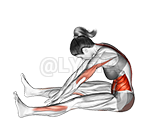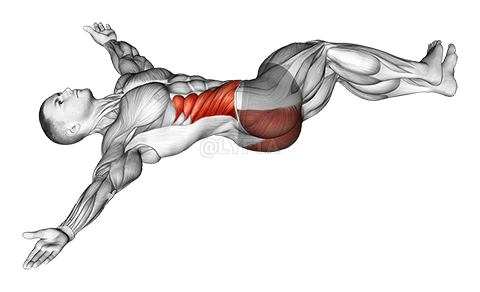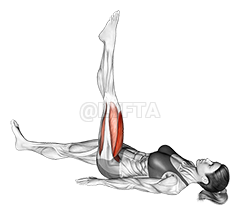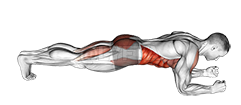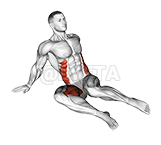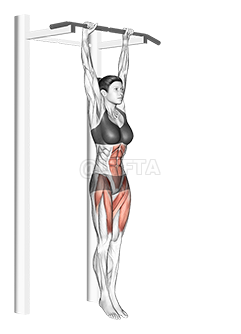
Cat Stretch
Exercise Profile
Related Exercises:
Introduction to the Cat Stretch
The Cat Stretch is a gentle exercise that improves flexibility and helps to relieve tension in the back, particularly the spine. It's suitable for people of all fitness levels, including those who spend long hours sitting or have back discomfort. Individuals may want to perform this exercise to enhance their posture, reduce stress, and maintain a healthy spine.
Performing the: A Step-by-Step Tutorial Cat Stretch
- Begin the cat stretch by slowly arching your back towards the ceiling, while tucking your chin into your chest and pulling your belly button towards your spine.
- Hold this position for a few seconds, feeling the stretch in your back and neck.
- After holding, slowly return to the initial position, ensuring your back is flat and your head is in a neutral position.
- Repeat this exercise for several rounds, ensuring to breathe deeply and evenly throughout the process.
Tips for Performing Cat Stretch
- **Breathing Technique**: Inhale as you drop your belly towards the mat, lifting your chin and chest, and gaze up toward the ceiling. This is the cow pose. As you exhale, draw your belly to your spine and round your back toward the ceiling. This is the cat pose. The exercise is often called "cat-cow" and is meant to help connect your breath to your movements.
- **Avoid Overarching**: A common mistake is to overarch the back, either when curving it upwards or downwards. This can put undue stress on the spine and lead to potential injuries. Always keep your movements smooth and controlled, and only stretch as far as you feel comfortable.
- **
Cat Stretch FAQs
Can beginners do the Cat Stretch?
Yes, beginners can definitely do the Cat Stretch exercise. It is a simple and effective exercise that helps to improve flexibility and relieve tension in the back. However, as with any exercise, it's important to use proper form to prevent injury. Beginners might want to start slowly and gradually increase the intensity of the stretch. It may also be beneficial to have a trainer or experienced individual supervise initially to ensure the exercise is being done correctly.
What are common variations of the Cat Stretch?
- The Kneeling Cat Stretch is a variation where you perform the cat stretch while kneeling, which can help to deepen the stretch in your back and shoulders.
- The Seated Cat Stretch involves sitting on your heels and stretching your arms out in front of you, which can help to relieve tension in your lower back.
- The Standing Cat Stretch is a variation where you perform the cat stretch while standing and bending at the waist, which can help to stretch your hamstrings and lower back.
- The Wall Cat Stretch involves performing the cat stretch against a wall, which can help to deepen the stretch in your upper back and shoulders.
What are good complementing exercises for the Cat Stretch?
- The Child's Pose is another complementary exercise to the Cat Stretch as it helps to elongate the lower back, relax the body, and also provides a gentle stretch to the hips, thighs, and ankles, areas that are engaged during the Cat Stretch.
- The Downward Facing Dog complements the Cat Stretch as it helps to strengthen and stretch the entire body, especially the back and shoulders, while also promoting blood circulation to the brain, enhancing the benefits gained from the Cat Stretch.
Related keywords for Cat Stretch
- Bodyweight Cat Stretch Exercise
- Hips and Waist Workout
- Cat Stretch for Hips
- Bodyweight Exercise for Waist
- Cat Stretch Bodyweight Training
- Waist Strengthening Cat Stretch
- Hips Toning Cat Stretch
- Bodyweight Hips and Waist Exercise
- Cat Stretch Home Workout
- Full Body Cat Stretch Exercise
